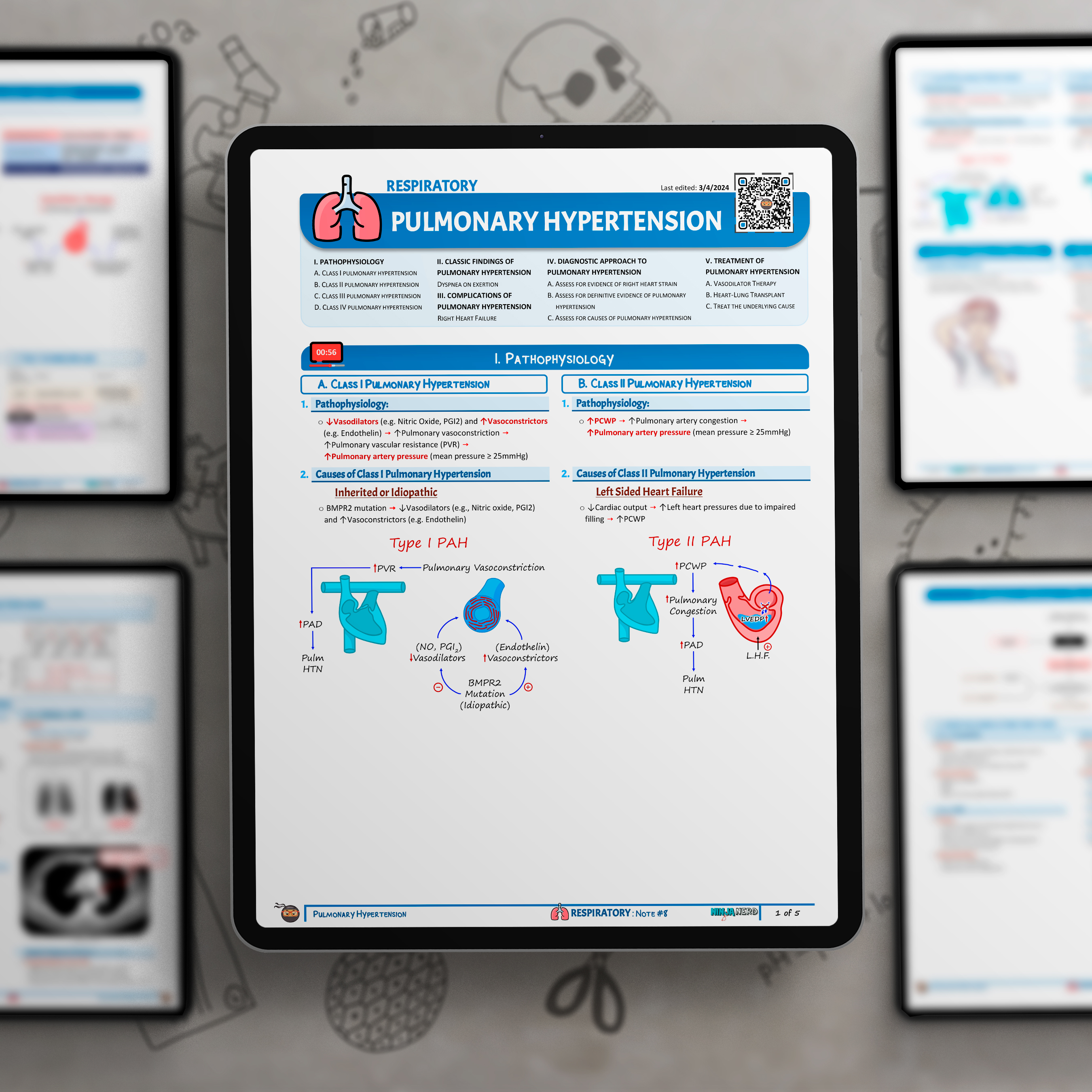Please help support Ninja Nerd to continue creating free medical videos. All donations we receive are put directly into content creation so we are able to continue providing these videos for free. Thanks!


Sorry, but there is currently no illustration available for this video.
Check back again soon, or contact us to find out when they will be available.
Ninja Nerds!
Professor Zach Murphy will be presenting on Pulmonary Artery Hypertension (PAH). We will be going into detail on the following main objectives:
1. Definition and Classification of Pulmonary Artery Hypertension
- Understand what pulmonary artery hypertension (PAH) is and how it differentiates from other types of hypertension.
- Familiarize yourself with the World Health Organization (WHO) functional classification system, which categorizes PAH based on symptom severity and limitations in daily activities.
2. Pathophysiology and Etiologies
- Delve into the underlying mechanisms that contribute to PAH, including vasoconstriction, vascular remodeling, and inflammation.
- Examine the role of various risk factors such as genetics, connective tissue diseases, and drug exposures in the onset and progression of PAH.
3. Clinical Manifestations and Presentation
- Learn to identify the common signs and symptoms associated with PAH, including but not limited to dyspnea, fatigue, and chest pain.
- Discuss the markers of disease severity and progression, such as exercise intolerance and the occurrence of syncope.
4. Diagnostic Criteria and Tools
- Understand the utility and interpretation of diagnostic tests like echocardiography, right heart catheterization, and pulmonary function tests.
- Familiarize yourself with the latest guidelines and consensus criteria for diagnosing PAH.
5. Initial Management Strategies
- Discuss evidence-based approaches for initial patient stabilization, focusing on pharmacotherapy with agents like endothelin receptor antagonists and phosphodiesterase-5 inhibitors.
- Understand the indications for supportive measures like oxygen therapy and diuretics.
6. Definitive Management Approaches
- Explore advanced treatment options such as prostacyclin analogs, soluble guanylate cyclase stimulators, and surgical interventions like lung transplantation.
- Evaluate the risks and benefits of each management strategy in light of the most current research and guidelines.
7. Complications and Prognosis
- Understand the potential complications of PAH, including right ventricular failure and arrhythmias.
- Discuss prognostic factors that can influence long-term outcomes, including WHO functional class, exercise capacity, and hemodynamic parameters.
Table of Contents:
0:00 Lab
0:07 Pulmonary Artery Hypertension (PAH) Introduction
0:37 Pathophysiology | Type I PAH
3:37 Pathophysiology | Type II PAH
5:39 Pathophysiology | Type III PAH
7:29 Pathophysiology | Type IV PAH
8:55 Complications | Right Heart Failure
13:17 Diagnostic Approach
17:26 Treatment
17:53 Vasodilator Therapy
19:52 Comment, Like, SUBSCRIBE!